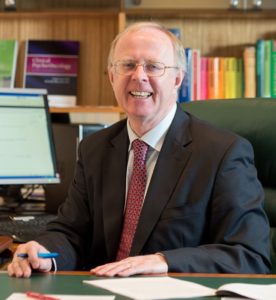Treating troubled family dynamics reduces complicated grief
Treating troubled family dynamics reduces complicated grief
by Heather Wiseman
Tuesday, December 06, 2016
People from unsupportive families that don’t function well are more at risk of developing a range of complicated grief and depressive disorders following the death of a loved one, according to a leading Australian psychiatrist.
Professor David Kissane, who heads the department of psychiatry at Monash University in Melbourne, has developed a family-focussed model of grief therapy to prevent complicated bereavement. A trial published in the Journal of Clinical Oncology earlier this year found the therapy reduced the severity of complicated grief in high-risk families and the development of prolonged grief disorder.
Professor Kissane says bereavement therapy for families is more effective than therapy for individuals when grief is being perpetuated by dysfunctional family relationships. He says the most common family configuration he sees is parents and their children, but for some families it includes a neighbour, grandparents or aunts and uncles.
“Family centred care is based on the idea that families that grieve together stay together and they heal their grief very well,” he tells Palliative Matters.
“Fractured families that can’t support one another often don’t allow grief to heal. Sometimes conflict in the family can perpetuate the grief and turn it into a prolonged grief or depressive disorder.”
Professor Kissane says the ideal time to identify and start supporting vulnerable families is when they are receiving palliative care. Relationships that health care practitioners build with families while a loved one is dying provide a solid basis for ongoing support after the patient’s death.
At-risk families can be identified using a 12-item checklist which covers communication, conflict and cohesion. It requires true or false responses to statements including ‘We talk openly in our family’, ‘We throw things when we get angry’ and ‘We really help each other in our family’. Professor Kissane says it quickly identifies relationship strains and family struggles, making it easy to pinpoint which families need ongoing care.
The screening tool is also beneficial in ensuring psychologists and social workers are engaging with the families that need their support the most. When service delivery is instead left to intuition, health professionals may be more likely to engage with grateful, appreciative, high-functioning families, rather than those that are more challenging.
“We try to get families to take stock of how they relate to one another. Is communication within the family open, easy and comfortable or is there avoidance? Do they keep secrets, or avoid talking about death and dying? Do they find some things too painful and difficult to talk about and then get stuck in a process that isn’t helpful?”
Professor Kissane says about one in five families receiving palliative care have issues with communication, conflict or cohesion and may need professional support.
“As you meet with them you can say, ‘I can hear it’s not easy for you to talk as a family, so we can keep meeting to help you talk better as this illness unfolds.”
Professor Kissane says concepts like chronic grief or prolonged grief are not well understood within the community, but the disorders affect up to 20% of people who are bereaved. He says the depth of attachment and nature of the death affect the intensity of grief and the duration of mourning. The process of healing can be deeply distressing. However, grieving people naturally reach a point where they are able to get on with their life. They may still cry when they remember and talk about the person they have lost, but they will not be living with constant, severe emotional distress.
Someone experiencing complicated grief experiences an intense, distressing level of loss and yearning that impacts on their life, potentially leading to social withdrawal, loss of confidence and an inability to function at work.
“There are behavioural, social, and functional consequences that flow from that mental state,” says Professor Kissane. The value in identifying this level of grief as a disorder is that diagnosis can lead to treatment and a management plan of ongoing support.
Even if only one member of the family experiences it, their outcomes are enhanced by family therapy.
“In our studies we have found instances where an adolescent close to a dying mother says they will kill themselves when their mother dies because couldn’t manage life without her. In those circumstances, you can help the family to support the bereaved adolescent to help them recover and heal.
“You sustain the work until the family members do relate, function well and comfort one another in bereavement. Once their grief is healing and they are all supporting each other well, you can say goodbye to them.”

